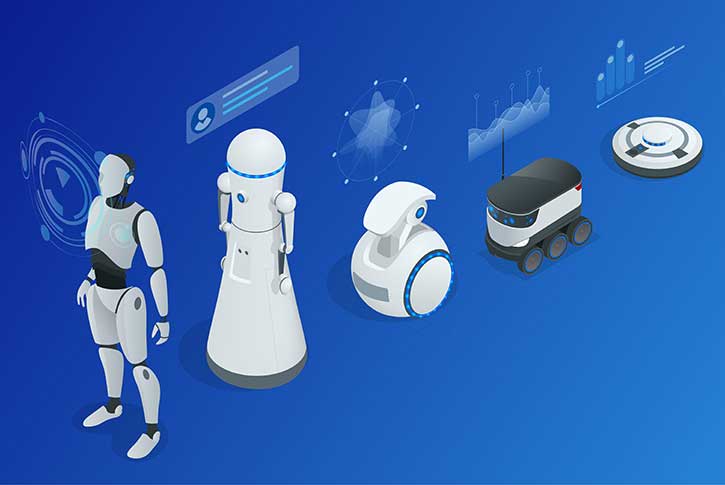Share This
Introduction to Remote User Testing

You might think you know your customers. You have created avatars of your ideal customers and have crafted marketing campaigns to speak to them. Can you say the same about your products, services, and digital experiences? You might be able to use your own product without a problem but what about your customers? Do they struggle with using your product?
Remote usability testing can help you create a product that users can effortlessly interact with and possibly enjoy using.
What is remote usability testing? When should you employ it? What are the types of testing? What are some of the best remote usability testing tools and software?
This article will address all of these questions so you can become a better-informed
What is Remote Usability Testing?
Remote usability testing involves using an insight platform to record the screen and/or voice of test participants to evaluate how they interact with your product, service, or digital experience in their natural environment, separated from the researcher.

When Should You Consider Remote Testing?
Before You Make Any Design Decisions
Identifying your users’ pain points can help you uncover what you need to do to address those points before you produce a product or experience. Interviews and surveys can help you to a certain extent but remote testing can help you get to know your users better. Gathering as much information as possible can help you design a more effective experience. For instance, testing how your users engage with a competing product can point out aspects to embrace and avoid.
After You Make a Prototype
Prototypes can take you one step closer to a completed product or experience. You have used the data from the initial remote tests to craft a basic skeleton of a product. Now is the time to assess its real-world use. You will want to record how many users completed the assigned tasks and how long it took them. You should want to see if the prototype performs according to their expectations.
After You Launch a Product
No product is ever perfect. Your audience’s changing abilities, expectations, and numbers can influence how your product is used. Ongoing remote user testing can help you develop new features, fine-tune old ones, and create a product that constantly fulfills what people want.
Whenever You Are Uncertain About a Product
If you have no idea if your product is even viable, remote user testing can help you decide one way or the other. You can even change your approach depending on the results. Why would you create something no one wants? Remote user testing can help you make products that are in demand.

Moderated vs. Unmoderated Tests
What is a moderated test?
A moderated test is a real-time evaluation with a user who tests your product or experience that is in some stage of production or release. A moderated test can be conducted remotely or in person. If it is performed remotely, then it must occur in real time, meaning that the researcher and user must maintain live contact. This can be facilitated via the phone, online chat, or virtual conferencing.
You can use a moderated test when you want to witness real-time user responses like visual cues. Actions can tell you more than words. Users can express one thing while their body says something else.
You can also use a moderated test to help users if they struggle with the technical aspects of your product or experience. You can reassure them and guide them to a resolution, noting their progress each step of the way.
What is an unmoderated test?
An unmoderated test is when a user tests a product on their own without real-time guidance. In many cases, the user determines when and where they will perform the test. You can ask them to record their test either via video or a written journal. Ideally, they will talk their way through the process to provide accurate feedback as it happens. Although there is no real-time communication between the researcher and user, they can connect after the test to review feedback.
You can use an unmoderated test if you can not spare any time or people to conduct the test. You can test other users or work on whatever else needs completing.
You can also use an unmoderated test when you want quick, honest feedback. Users might want to get the test finished as soon as possible and move on. They might also be more honest if they do not have a researcher breathing down their neck. It is sometimes easier to hurt someone’s feelings if you do not have to look them in the face. This is the type of honesty you should want. Take the criticism and accordingly modify your product.
What is the difference between moderated and unmoderated tests?
The main difference between moderated and unmoderated tests is the presence/absence of researchers. Moderated testing requires someone to be present to guide users through the test. Unmoderated testing does not require real-time guidance.

Best Remote Usability Testing Tools and Software
UserTesting
UserTesting connects companies to the platform’s user base and their own customers. Companies can then create a test plan to ask any question or request users to perform tasks. They can view their users’ interactions via video through the platform and then share insights across their organizations. UserTesting helps empower over 2,500 brands to design the most effective, efficient, and memorable products for their customers.
Loop11
Loop11’s data-driven design can help marketing and product teams make smarter design decisions. The platform allows companies to set tasks and measure the success of their product against customer intent. Companies can collect insights from any number of tested users they choose. Companies can also use Loop11 to record audio and video for moderated and unmoderated testing interactions. No coding knowledge is required to use the platform.
UserBob
UserBob can recruit users to test apps and websites. Companies provide users with instructions to follow. Users will then be asked to think out loud so they are recorded. In addition, their screens will also be recorded to offer insights into usability. Companies will be able to see what their users see and leverage this information to create an optimized experience.

Upgrade Your Product
Remote user testing can help you discover how people react to your product, service, and experience. This can prove useful at each point in your product’s life cycle. You can see what users like and dislike as well as the areas that confuse them. You can use this vital information to improve your product, which can lead to significant brand awareness and revenue gains.